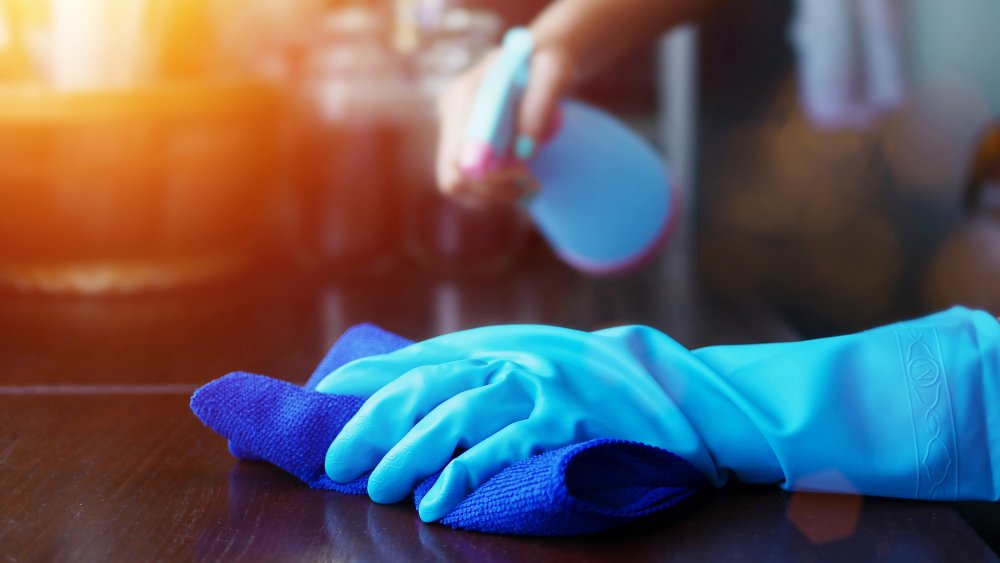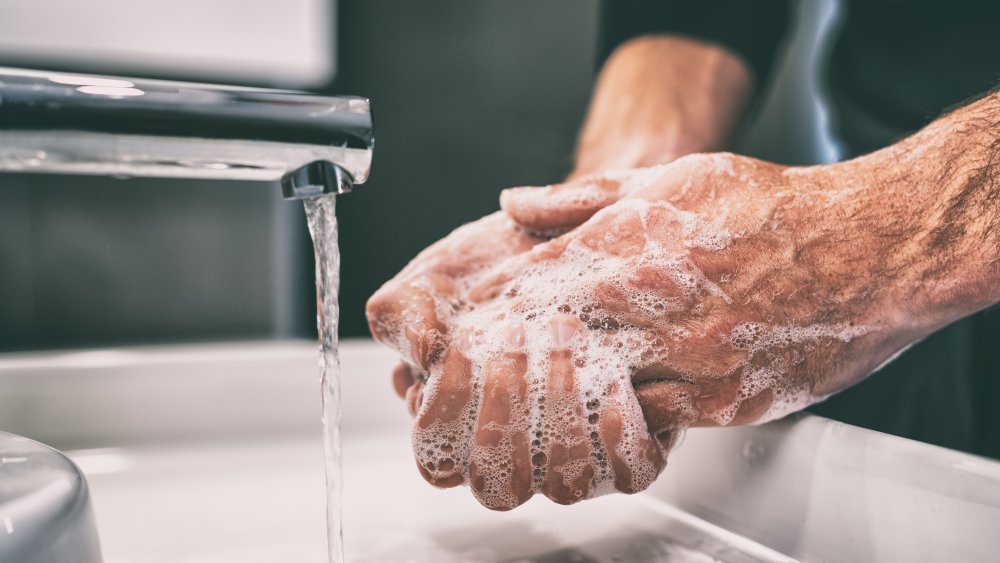The Real Difference Between Sanitizing And Disinfecting
For all the effort that's being put into disinfecting our world, hopefully we're doing it right. With the huge number of cleaning products on the market, knowing which product to use for the job can be a challenge.
It helps to define our terms. Although sanitizing and disinfecting are often used interchangeably, they actually have specific meanings, and different products are used for each purpose.
Cleaning simply means to physically remove germs and dirt from an area by using soap and water (via Health). As the Environmental Protection Agency (EPA) notes, cleaning doesn't kill bacteria, viruses, or fungi. But by lowering the number of germs, the risk of getting an infection decreases.
Sanitizing means to lower the number of germs, either by killing them using chemical agents, or removing them, to a level deemed safe according to public health standards or requirements.
Disinfecting means to kill the germs on surfaces or objects using chemical means. This doesn't actually 'clean' the surface, but reduces the risk of infection by killing germs.
Wipe surfaces, wash hands
So the difference between sanitizing and disinfecting is really one of degree — and a very small one at that. Sanitizing products should kill 99.9 percent of germs on hard surfaces, while stronger disinfecting products go a step further to 99.999 percent, according to the EPA.
Diane Calello, M.D., executive and medical director of New Jersey Poison Center and an associate professor of emergency medicine at Rutgers New Jersey Medical School, explains, "Disinfecting kills the majority of viruses and bacteria. Sanitizing doesn't kill everything."
It's important to match the right product to the types of germs you want to remove or kill. For hand washing, simple soap and water, as it turns out, is your best bet. Hand sanitizer is fine when out in public, but many 'good' bacteria live on our skin and so it's not necessary (and actually can be really harmful) to apply a harsh product that kills all bacteria to the skin. As Donald Ford, M.D., family medicine doctor at Cleveland Clinic puts it, "Wipe off surfaces, [but] wash your hands."
Food-preparation surfaces should generally be cleaned, rinsed, and then sanitized instead of disinfected so that any chemical residue left behind isn't as strong and potentially toxic. For high-touch areas like door and toilet handles, disinfecting is a good idea, being sure to follow label directions.


